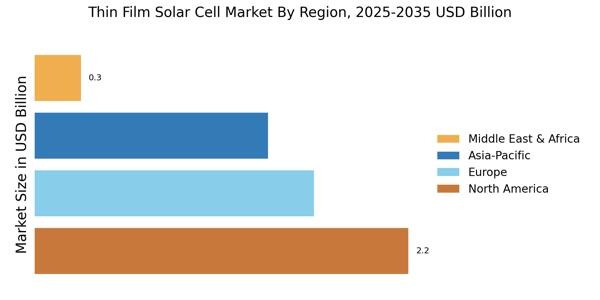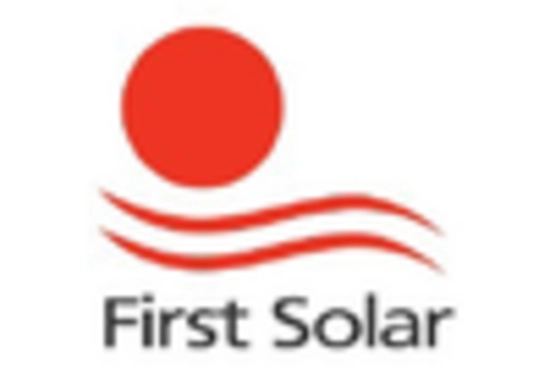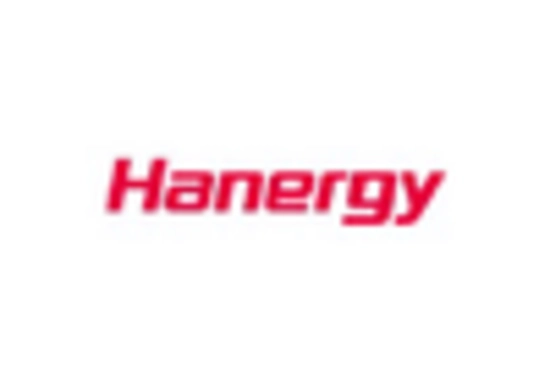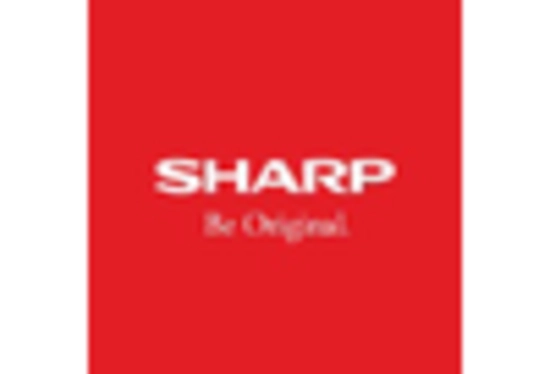Government Policies and Incentives
Government policies and incentives play a crucial role in shaping the Thin Film Solar Cell Market. Many countries have implemented favorable regulations and financial incentives to promote the adoption of renewable energy technologies. These initiatives often include tax credits, grants, and subsidies aimed at reducing the initial investment costs for solar installations. As of 2025, such supportive measures are expected to enhance the attractiveness of thin film solar cells, encouraging both residential and commercial users to invest in solar energy solutions. The alignment of government objectives with renewable energy goals is likely to propel the growth of the Thin Film Solar Cell Market.
Growing Energy Needs and Urbanization
The increasing energy needs driven by urbanization are a significant factor influencing the Thin Film Solar Cell Market. As urban populations expand, the demand for energy continues to rise, necessitating the exploration of alternative energy sources. Thin film solar cells, with their lightweight and flexible characteristics, are particularly suited for urban environments where space is often limited. In 2025, the integration of solar technologies into building designs is anticipated to become more prevalent, further driving the adoption of thin film solar cells. This trend reflects a broader shift towards sustainable urban development, positioning the Thin Film Solar Cell Market for substantial growth.
Increasing Demand for Renewable Energy
The rising demand for renewable energy sources is a primary driver for the Thin Film Solar Cell Market. As nations strive to meet energy needs sustainably, the adoption of solar technologies has surged. In 2025, the solar energy sector is projected to account for a substantial share of the energy mix, with thin film solar cells playing a pivotal role due to their efficiency and versatility. This trend is further supported by government incentives and policies aimed at reducing carbon emissions. The increasing focus on energy independence and security also propels the demand for solar energy solutions, thereby enhancing the growth prospects of the Thin Film Solar Cell Market.
Cost-Effectiveness of Thin Film Technologies
Cost considerations significantly influence the Thin Film Solar Cell Market. Thin film solar cells are generally less expensive to produce compared to traditional silicon-based solar cells. This cost advantage is attributed to the lower material requirements and simpler manufacturing processes. As of 2025, the average cost of thin film solar cells has decreased, making them an attractive option for both residential and commercial applications. The affordability of these technologies encourages wider adoption, particularly in regions with limited access to conventional energy sources. Consequently, the cost-effectiveness of thin film technologies is likely to drive market growth and expand their application in various sectors.
Technological Innovations in Solar Cell Manufacturing
Technological innovations are reshaping the Thin Film Solar Cell Market. Advances in manufacturing techniques, such as roll-to-roll processing and improved deposition methods, enhance the efficiency and performance of thin film solar cells. These innovations not only reduce production costs but also improve the overall energy conversion efficiency of the cells. In 2025, the introduction of new materials and processes is expected to further boost the market, as manufacturers strive to meet the increasing energy demands. The continuous evolution of technology in solar cell manufacturing is likely to create new opportunities and drive the growth of the Thin Film Solar Cell Market.


















Leave a Comment